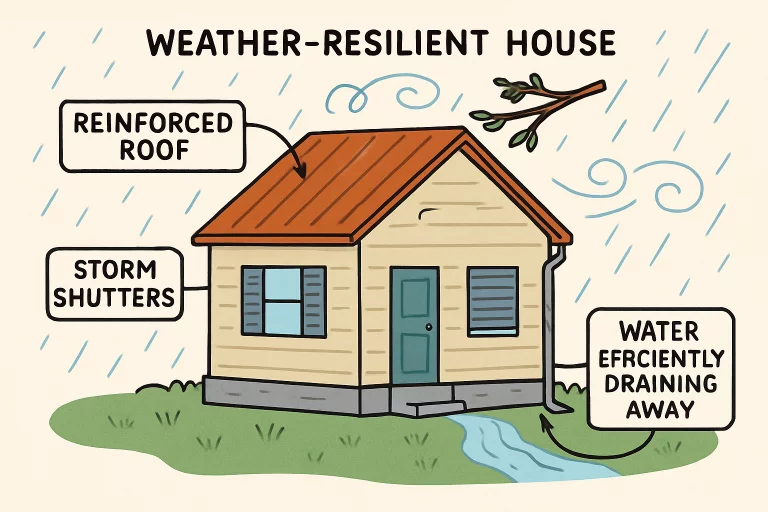Home Safety Upgrades for Extreme Weather Events
Extreme weather events are becoming more frequent and severe, making home safety upgrades a growing priority for homeowners. From hurricanes and wildfires to floods and winter storms, preparing your home for these challenges is essential to minimize damage, protect loved ones, and preserve property value. The key is identifying vulnerabilities and reinforcing critical areas before disaster strikes.
One effective strategy is strengthening the structural integrity of your home. Roof reinforcement, impact-resistant windows, and reinforced doors are standard upgrades that offer increased protection. Another method gaining attention is third nail retrofitting, which adds an extra nail to roof-to-wall connections to improve resistance to high winds. These proactive measures help reduce the risk of catastrophic failure, offering safety and peace of mind during extreme weather conditions.
Table of Contents
Reinforce Roofing and Structures
Reinforcing roofing and structural elements is critical to home safety upgrades, especially as extreme weather events become more frequent and intense. Strengthening your home’s roof, walls, and foundation can significantly reduce the risk of damage from high winds, heavy rains, or snow loads. Regular inspections and proactive repairs help identify weak points before they become hazards. One practical step in this process is obtaining a roof certification, which verifies that your roof meets specific safety and durability standards. Investing in structural resilience not only enhances protection for occupants but also helps preserve the value and longevity of the home over time..
Install Impact-Resistant Windows and Doors
Upgrading windows and doors to impact-resistant units is crucial for storm-proofing, as they are vulnerable entry points for wind, rain, and debris. These windows offer enhanced security, energy efficiency, and protection from break-ins. For hurricane-prone homes, wind-rated garage doors and storm shutters provide temporary shielding. These reinforcements protect families, attract potential buyers, and enhance property marketability.

Enhance Landscaping and Drainage
Landscaping in extreme weather areas is crucial for flood prevention. Proper soil grading, French drains, and permeable paving materials can help channel rainwater and snow towards drainage areas. Regular tree maintenance, pruning, and using native or drought-resistant plants can promote tree health and long-term landscape resilience. These steps protect your home and foster a more sustainable and resilient environment.
Implement Backup Power Solutions
Extreme weather can cause electricity loss, disrupting lives and threatening safety. Backup power solutions like standby generators and solar power systems can provide emergency power, minimize long-term costs, and reduce the carbon footprint. Customized backup options can be tailored to the size and unique needs of the home, providing added preparedness beyond traditional options.
Utilize Smart Home Monitoring Systems
Smart home technology allows real-time monitoring of environmental conditions, providing safety and convenience. Environmental sensors can identify threats like water leaks, smoke, and seismic activity, delivering instant smartphone alerts. Some systems also have automatic shut-off valves, reducing fire risk. Remote control of lights, locks, and alarms enhances risk management and prevents disasters.
Comments